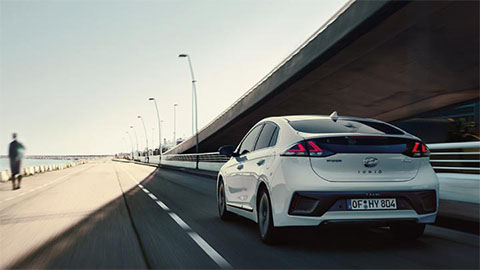A Guide to Understanding Negative Equity in Car Finance
12th Jun 2025
Even though the term negative equity is more commonly associated with house sales, you may have come across it when researching about car sale. Just like in property, negative equity means that your asset’s current value is less than the amount you still owe on it.
This guide will explain in detail what negative equity means in the context of car sales, what causes it, and how to avoid it.
- Understanding car finance with negative equity
- What leads to negative equity in car loans?
- How to get out of negative equity in car finance
- Tips to prevent owing more than your car’s worth
- How GAP insurance relates to negative equity
- Frequently Asked Questions
Understanding car finance with negative equity
Negative equity on a car occurs when the amount you still owe on your finance agreement is greater than the car’s current value. For example, if you owe £10,000 on your loan, but your car is only worth £8,000, you have £2,000 in negative equity.
Owning a vehicle with negative equity can be challenging, especially if you’re looking to pay off your finance agreement early or trade it in for a newer model, because you may need to pay extra to settle the remaining debt or roll over the remaining balance to a new finance agreement.
What leads to negative equity in car loans?
There are several factors that can lead your vehicle to negative equity. While there are steps you can take to help prevent it, some factors are unfortunately beyond the vehicle owner’s control.
Measures you can take to avoid negative equity:
- Small or no downpayment: Without a sizable downpayment, you’ll be financing most of the vehicle’s cost. This means that by the time you decide to upgrade or sell the car, it may have already depreciated significantly.
- Long loan terms: Extending your loan results in lower monthly payments over a longer period. However, this can increase the total interest paid and slow down your progress in paying off the principal.
- Rolling over previous debt: If you roll over debt from a previously financed vehicle, you’ll start the new loan with negative equity from the outset.
- Excessive Mileage and car damage: Anything that reduces your car’s resale value, such as high mileage and physical damage, can result in negative equity. The better condition and lower mileage, the more valuable your vehicle will be, reducing the risk of owing more than it’s worth.
Factors beyond your control that affect vehicle value:
- Rapid Depreciation: A brand-new car starts to lose its value the moment you drive it off the lot. This rapid depreciation can create negative equity.
- High Interest Rate: Loan payments typically cover interest first. A high interest rate means more of your early payments go toward interest rather than reducing the principal, delaying your ability to build equity in the car.
How to get out of negative equity in car finance
There are several ways to avoid falling into negative equity, and even get out of it if you’re already there. The most straightforward solution is to keep the vehicle until it’s fully paid off, and only then consider upgrading it or selling it.
Making extra payments is a smart move. Not only does it help you pay off the car faster, reducing your exposure to rapid depreciation, but it also means you’ll pay less interest over the life of the loan.
If you had a bad credit score when you first financed your vehicle, consider refinancing once your score improves. This could lower your interest rate and make monthly payments more effective at reducing the principal, helping you avoid or reduce negative equity.
Finally, if you’re in a hurry to sell your car, you can choose to sell it privately or through a dealership and pay the difference out of pocket. While not ideal, this option allows you to clear the remaining debt and move on.
Tips to prevent owing more than your car’s worth
Start by aiming for a down payment of 10 to 20 percent at least. Low down payments can significantly increase the total amount you’ll pay for your car, since you’ll need to borrow more money, resulting in higher interest payments over time.
Choosing the right loan term is also important. While longer terms may reduce monthly instalments, they also mean you're likely to pay more interest in total. If possible, choose a 36 to 60-month finance agreement. Not only will this reduce the amount spent on interest, but it’ll also help you build equity faster.
Finally, avoid rolling over negative equity from a previous loan whenever possible. When you transfer existing debt from an old car into a new finance agreement, you’re essentially paying two loans at once. This increases the risk of starting your new contract already owing more than the car is worth, making it harder to stay out of negative equity.
How GAP insurance relates to negative equity?
Guaranteed Asset Protection, also known as GAP insurance, is a specific type of coverage that pays off the remaining balance of a car finance if your primary car insurance payout leaves you with negative equity.
In the unfortunate event that your vehicle is stolen or written off in an accident, your insurance company may only cover the actual cash value of the car, which could be less than you still owe on your loan. Since you’re responsible for paying the remaining balance, GAP insurance protects you from having to pay out of pocket in such situations.
Frequently Asked Questions
Most car finance agreements state that the lender remains the legal owner of the vehicle until the loan is fully paid off. With that in mind, selling a car with negative equity is only possible when you settle the remaining debt. You can either pay off the debt yourself or arrange for the buyer or dealership to cover the outstanding amount as part of the sale agreement.
Even though it’s not always advisable, it is possible to end a car finance early. You can contact your finance provider to settle the debt at any time, even if you’re in negative equity. However, this may involve additional charges or early repayment fees, which could increase your negative equity even more.
In short, yes, it's possible. When you purchase a new car, the dealership may pay off the outstanding balance on your old finance agreement, and this amount can roll over into the new loan.
While this isn't a recommended practice as it could lead to negative equity on your new vehicle, it may be an alternative if you need to upgrade your car partway through your finance agreement.
Learn more about finance with Evans Halshaw
Even though purchasing a vehicle through car finance always carries some risk of ending up with negative equity, taking the right precautions and taking care of your vehicle properly can help you avoid it.
You can find more advice on car finance and helpful guides for selling your car on our blog, which is regularly updated with accurate and up-to-date information.










